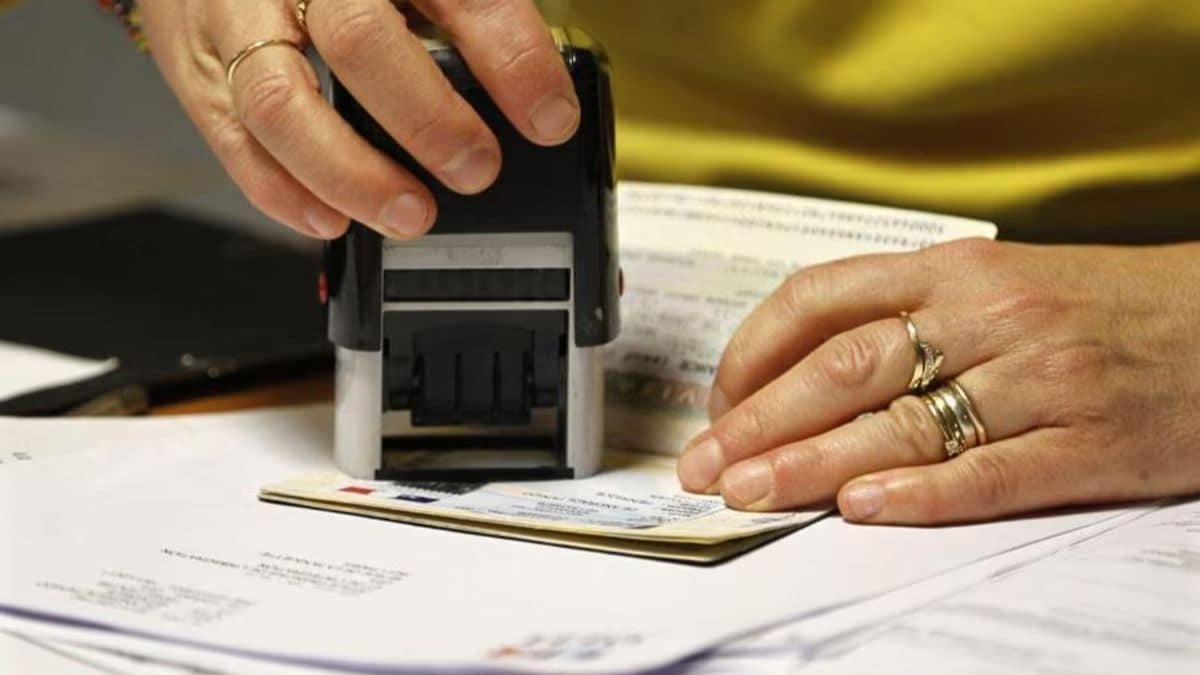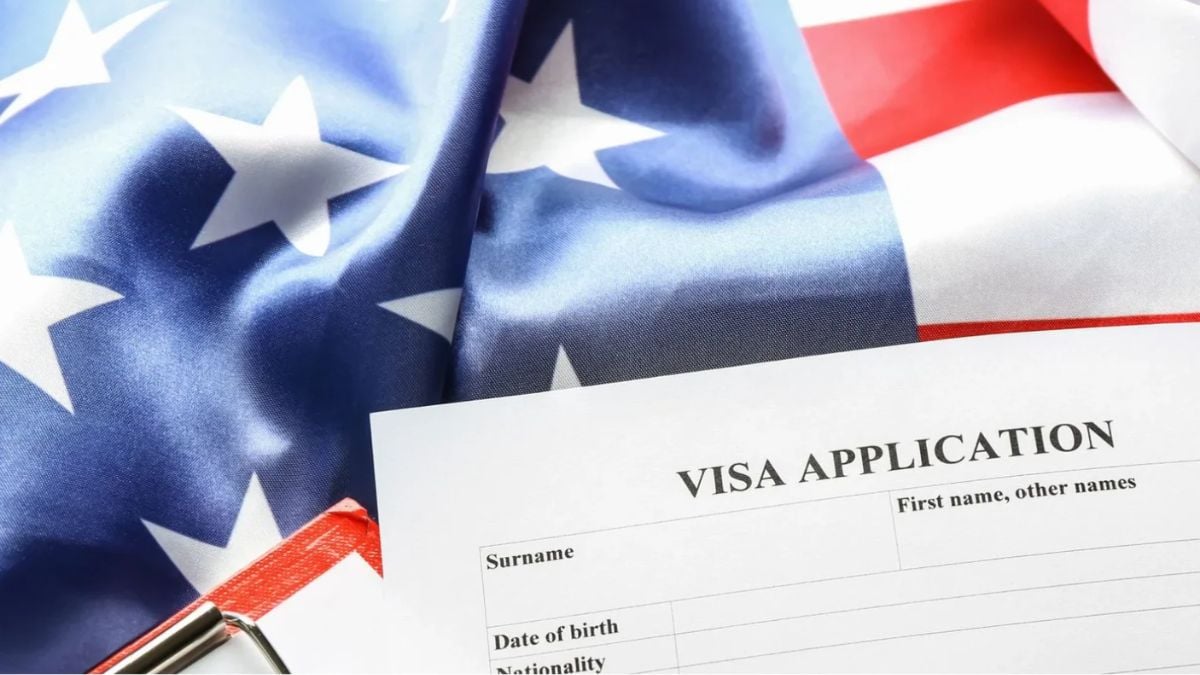What is the story about?
Concerns have grown over Donald Trump’s move to raise the H-1B visa fee to $100,000 (around Rs 88 lakh), leading skilled workers and students across the world to consider other options for entering the United States.
One such option is the O-1 visa, often called the ‘Einstein visa’.
ALSO READ | Weddings called off, Diwali trips cancelled: How H-1B visa fee hike caused panic among Indians
This visa is not open to everyone, but for those who meet the requirements and provides a clear path to work in the United States.
With a strong record of approvals, the O-1 visa is now being viewed as an alternative to the highly competitive H-1B visa.
So what exactly is this visa? Who can apply? Why is it considered an alternative to the H-1B visa? And what is the process to apply?
Let’s answer these questions:
The O-1 visa, introduced under the US Immigration Act of 1990, allows people with "extraordinary ability" to work in the US for up to three years.
It is provided to those who can show exceptional talent or achievements in science, education, business, or athletics (O-1A), and in the arts or film (O-1B).
Applicants must meet at least three of eight criteria, such as awards, original work, published material, media coverage, or membership in respected organisations.
The O-1 visa is becoming popular among Indian professionals, including cybersecurity experts, AI researchers, filmmakers, athletes, and digital content creators, as it provides a clear, merit-based way to work and live in the US.

Applicants must demonstrate consistent national or international recognition in their field. Examples include:
Qualification relies on strong evidence, such as awards, media coverage, original work, or membership in top professional associations.
The visa is based on documentation, not luck.
According the US Citizenship and Immigration Services (USCIS), there is no lottery or annual limit. However, applicants must have a US sponsor or agent to submit the petition; self-petitioning is not allowed.
The O-1 visa is initially issued for up to three years.
However, it can be extended in one-year periods, provided the individual continues to meet the visa criteria and works in their field of extraordinary ability.
Reports suggest that applying for an O-1A visa can cost between $10,000 and $30,000 (around Rs 8.9 lakh to Rs 26.5 lakh).
“There’s definitely higher interest in O-1A, simply because it's like an H-1B without a lottery, although it’s not a piece of cake,” Sahil Nyati, founder of Jinee Green Card, told
The Economic Times.
Interest in the O-1A visa has increased following the rise of H-1B visa fees to $100,000 for new applicants.
The White House clarified in a social media post that the new rule “does not impact the ability of any current visa holder to travel to/from the U.S.”
More than 70% of H-1B visa holders are from India, and these visas have traditionally been allocated through a lottery system.
Unlike the H-1B, which has an annual lottery due to high demand, there is no annual cap on the number of O-1 visas issued.

Logan Ullyott, an O-1 visa holder and founder of Compass Visas, which helps people in business and tech with visa and green card applications, told Business Insider that while both H-1B and O-1 visas require employer sponsorship, the O-1 offers a key advantage: it can be renewed.
There is a drawback, though.
The H-1B process is generally simpler, less costly, and less subjective than the O-1. Some employers are therefore reluctant to pursue an O-1 application if there is any doubt over whether the candidate fully qualifies, Ullyott said.
1. Find a US sponsor or agent: You need a US employer, agent, or organisation to file the application on your behalf.
2. Gather documents: You must provide evidence of your extraordinary ability. This can include major national or international awards, original contributions such as patents or innovations, published work, press coverage, and more.
Applicants under O-1B (arts) must demonstrate a high level of distinction but may need fewer documents than those applying in science or business.
3. File Form I-129 with USCIS: Your US sponsor must submit Form I-129 to the US Citizenship and Immigration Services (USCIS), including a consultation letter from a peer group or labour union (required for O-1B), a work itinerary, and a signed contract with the employer.
4. Wait for approval: If your petition is accepted, you will get a Form I-797 Notice of Approval. This confirms your petition has been approved, though it is not the visa itself.
5. Apply for the visa at a US consulate in India: Once the petition is approved, you can apply for the visa at a US Embassy or Consulate.
If granted, you may enter the US up to ten days before your job starts. O-1 visas are usually issued for three years and can be extended in one-year increments.
One such option is the O-1 visa, often called the ‘Einstein visa’.
ALSO READ | Weddings called off, Diwali trips cancelled: How H-1B visa fee hike caused panic among Indians
This visa is not open to everyone, but for those who meet the requirements and provides a clear path to work in the United States.
With a strong record of approvals, the O-1 visa is now being viewed as an alternative to the highly competitive H-1B visa.
So what exactly is this visa? Who can apply? Why is it considered an alternative to the H-1B visa? And what is the process to apply?
Let’s answer these questions:
Explained: What is the O-1 visa?
The O-1 visa, introduced under the US Immigration Act of 1990, allows people with "extraordinary ability" to work in the US for up to three years.
It is provided to those who can show exceptional talent or achievements in science, education, business, or athletics (O-1A), and in the arts or film (O-1B).
Applicants must meet at least three of eight criteria, such as awards, original work, published material, media coverage, or membership in respected organisations.
The O-1 visa is becoming popular among Indian professionals, including cybersecurity experts, AI researchers, filmmakers, athletes, and digital content creators, as it provides a clear, merit-based way to work and live in the US.

This visa is not open to everyone, but for those who meet the requirements. Image: News18/Representational Image
Who is eligible for the ‘Einstein visa’?
Applicants must demonstrate consistent national or international recognition in their field. Examples include:
- Scientists holding patents or recognised for major research
- Olympic athletes or world title holders
- Musicians or artists nominated for awards such as the Grammys or Oscars
- Business executives with notable contributions to their sector
- Recipients of nationally or internationally recognised prizes for excellence
- Individuals featured in major professional publications or media for their work
‘No lottery’
Qualification relies on strong evidence, such as awards, media coverage, original work, or membership in top professional associations.
The visa is based on documentation, not luck.
According the US Citizenship and Immigration Services (USCIS), there is no lottery or annual limit. However, applicants must have a US sponsor or agent to submit the petition; self-petitioning is not allowed.
Duration and cost of visa
The O-1 visa is initially issued for up to three years.
However, it can be extended in one-year periods, provided the individual continues to meet the visa criteria and works in their field of extraordinary ability.
Reports suggest that applying for an O-1A visa can cost between $10,000 and $30,000 (around Rs 8.9 lakh to Rs 26.5 lakh).
“There’s definitely higher interest in O-1A, simply because it's like an H-1B without a lottery, although it’s not a piece of cake,” Sahil Nyati, founder of Jinee Green Card, told
Why O-1A visa is seen as an alternative to H-1B
Interest in the O-1A visa has increased following the rise of H-1B visa fees to $100,000 for new applicants.
The White House clarified in a social media post that the new rule “does not impact the ability of any current visa holder to travel to/from the U.S.”
More than 70% of H-1B visa holders are from India, and these visas have traditionally been allocated through a lottery system.
Unlike the H-1B, which has an annual lottery due to high demand, there is no annual cap on the number of O-1 visas issued.

The O-1 visa is initially issued for up to three years. Image: News18/Representational Image
Logan Ullyott, an O-1 visa holder and founder of Compass Visas, which helps people in business and tech with visa and green card applications, told Business Insider that while both H-1B and O-1 visas require employer sponsorship, the O-1 offers a key advantage: it can be renewed.
There is a drawback, though.
The H-1B process is generally simpler, less costly, and less subjective than the O-1. Some employers are therefore reluctant to pursue an O-1 application if there is any doubt over whether the candidate fully qualifies, Ullyott said.
How to apply for O-1 visa?
1. Find a US sponsor or agent: You need a US employer, agent, or organisation to file the application on your behalf.
2. Gather documents: You must provide evidence of your extraordinary ability. This can include major national or international awards, original contributions such as patents or innovations, published work, press coverage, and more.
Applicants under O-1B (arts) must demonstrate a high level of distinction but may need fewer documents than those applying in science or business.
3. File Form I-129 with USCIS: Your US sponsor must submit Form I-129 to the US Citizenship and Immigration Services (USCIS), including a consultation letter from a peer group or labour union (required for O-1B), a work itinerary, and a signed contract with the employer.
4. Wait for approval: If your petition is accepted, you will get a Form I-797 Notice of Approval. This confirms your petition has been approved, though it is not the visa itself.
5. Apply for the visa at a US consulate in India: Once the petition is approved, you can apply for the visa at a US Embassy or Consulate.
If granted, you may enter the US up to ten days before your job starts. O-1 visas are usually issued for three years and can be extended in one-year increments.
Do you find this article useful?


















